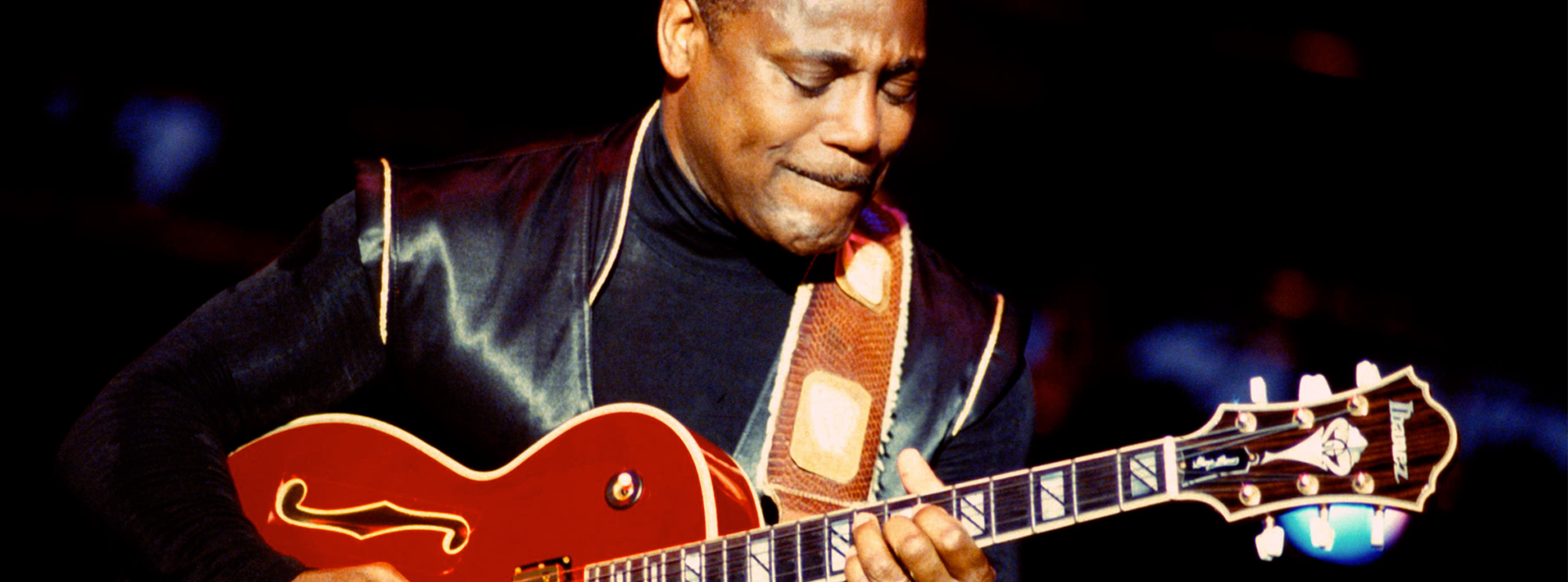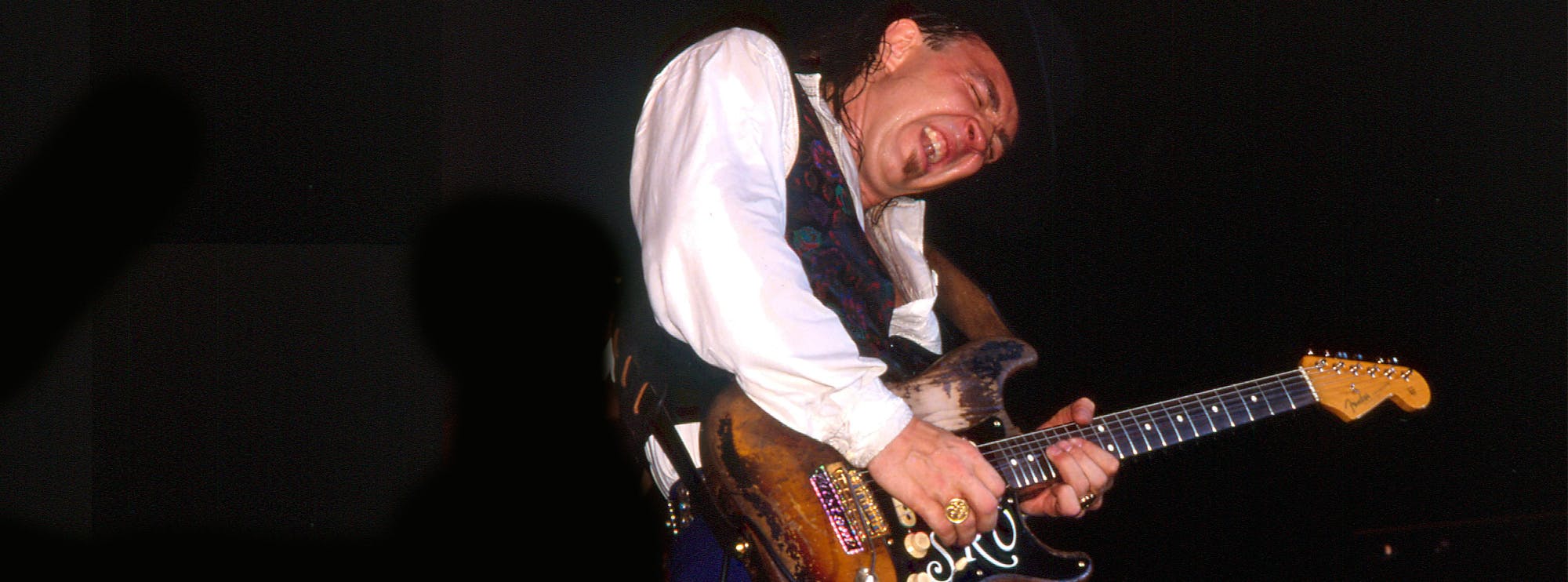Custard Pie by Led Zeppelin – Guitar Lesson Breakdown
“Custard Pie” is the opening track from Led Zeppelin’s 1975 masterpiece Physical Graffiti, and it kicks things off with a swaggering, blues-soaked riff that blends gritty funk grooves with raw rock 'n' roll attitude. Jimmy Page’s guitar tone is thick, riff-driven, and drenched in attitude, setting the tone for the album with a track that’s both deceptively simple and bursting with subtle nuance. At LickLibrary.com, our note-for-note guitar lesson on “Custard Pie” teaches you every twist of this infectious Zeppelin groove, breaking down the riffs, fills, and lead phrases in precise detail.
This lesson focuses on four key guitar techniques used throughout the track: power chords, vibrato, string bending, and alternate picking. Each of these techniques is a cornerstone of Jimmy Page’s style and essential for any guitarist looking to inject grit, groove, and soul into their rhythm and lead playing. This lesson is taught by Danny Gill.
Techniques Used
Power Chords
At the heart of the song’s riff are punchy power chords. These tight, driving chord shapes give the riff its muscle and keep it grounded in classic rock territory. Page uses them for rhythm stabs, accents, and chordal movement throughout the track.
Benefit to the player: Power chords are a fundamental part of any rock guitarist’s toolkit. They help build finger strength, muting accuracy, and tight coordination between the hands. Learning to play them cleanly and with groove will improve your rhythm playing across all styles.
Vibrato
Page uses expressive vibrato to give his sustained notes more character and emotion, especially in lead fills and licks between vocal lines. His vibrato is controlled and vocal-like, adding a subtle intensity to his phrasing.
Benefit to the player: Vibrato adds life and expression to any note. Mastering this technique improves finger control and helps you develop your own voice as a lead guitarist. It's also critical for creating sustain and emotional weight in your playing.
String Bending
Throughout the solo and fill sections, Page uses string bending to add phrasing nuance and bluesy tension. His bends are deliberate and well-placed, enhancing the vocal quality of the lead guitar work.
Benefit to the player: String bending builds strength, pitch control, and phrasing ability. It’s essential for blues and rock guitar and adds a dynamic, expressive edge to your solos and melodic lines.
Alternate Picking
The tight rhythmic execution of the main riff relies heavily on clean alternate picking. This ensures that every note is articulated clearly, even when played at speed, giving the riff its signature drive and sharp attack.
Benefit to the player: Alternate picking improves your picking accuracy, speed, and endurance. It’s a core technique for both rhythm and lead playing and vital for keeping your picking hand relaxed and efficient, especially in fast or syncopated passages.
About the Song and Guitar Style
With its slinky main riff, chugging rhythm, and bluesy fills, “Custard Pie” is a powerful study in groove-oriented guitar playing. Page’s performance here is all about the feel—the way the riff pushes and pulls against John Bonham’s in-the-pocket drumming creates a tight, funky swagger that’s impossible to ignore. This isn’t flashy guitar work; it’s confident, deliberate, and loaded with attitude.
The track draws heavily from electric blues, particularly the Delta and Chicago traditions, but it’s filtered through Led Zeppelin’s signature heaviness and dynamic range. From the aggressive, stabbing rhythm parts to the gritty slide-infused soloing, “Custard Pie” is a masterclass in blues-based rock phrasing and rhythmic discipline.
About the Guitar Player – Jimmy Page
Jimmy Page is one of the most influential guitarists in rock history. As Led Zeppelin’s creative leader and producer, Page’s work redefined what guitar could do in a rock context. While he’s often celebrated for his epic solos and acoustic experiments, “Custard Pie” highlights another side of his playing—his ability to lock into a groove and deliver tight, expressive rhythm work.
Page’s tone and technique on this track are unmistakable. His clever use of dynamics, timing, and technique proves that a great riff doesn’t need to be complex—it just needs to groove. Learning this song offers guitarists an opportunity to dig into Page’s rhythmic phrasing, tone control, and blues-infused style.
Summary
Our Custard Pie guitar lesson at LickLibrary.com is the perfect breakdown of one of Led Zeppelin’s grooviest and grittiest tracks. This isn’t just about learning a riff—it’s about capturing the attitude behind the playing. Jimmy Page’s guitar work on “Custard Pie” offers a masterclass in tight rhythm, dynamic control, and blues-based expression.
By focusing on power chords, vibrato, string bending, and alternate picking, this lesson provides guitarists with the technical and musical tools to not only recreate the song, but also improve their overall approach to groove-based rock guitar. Whether you're a rhythm player looking to tighten your playing or a lead guitarist wanting to add more soul to your solos, this track has something to offer.
Techniques Used in This Lesson
Get your groove on and bring the swagger of “Custard Pie” to your playing with our expert lesson at LickLibrary.com—a must-learn for any guitarist exploring the gritty heart of Led Zeppelin’s sound.

About The Tutor
Tutor Profile
Danny Gill
Danny Gill is, without a doubt, the most loved tutor by our community. With an incredible array of DVDs and web lessons for LickLibrary covering a wide variety of topics all of which he covers with incredible detail, it's no wonder he carries as much respect as he does. As...




